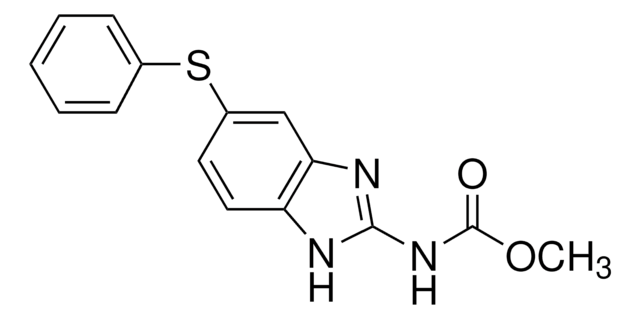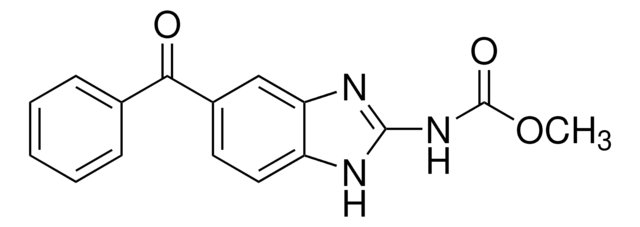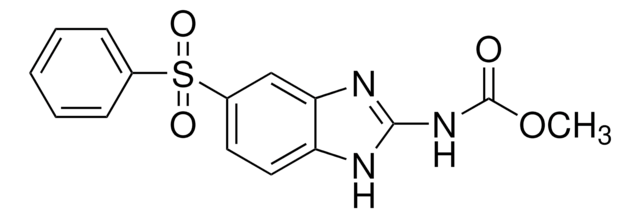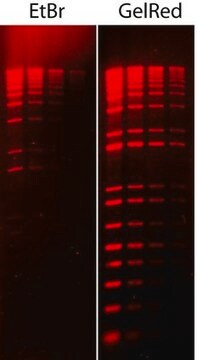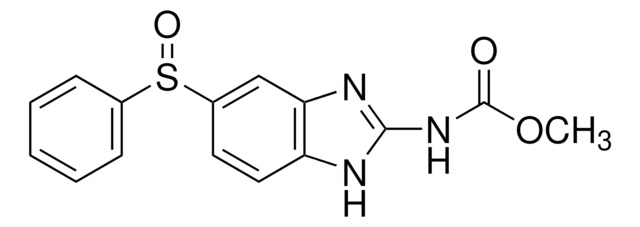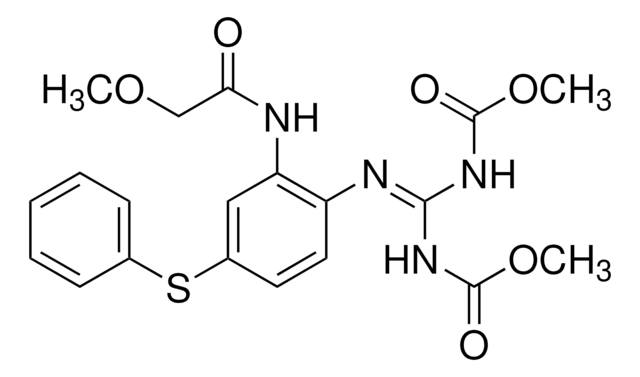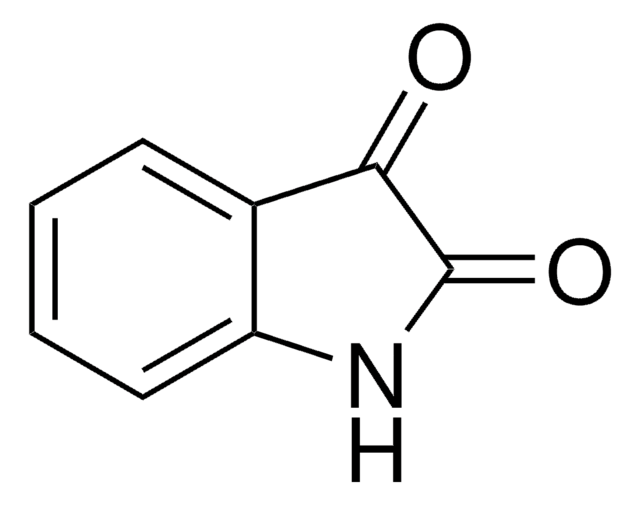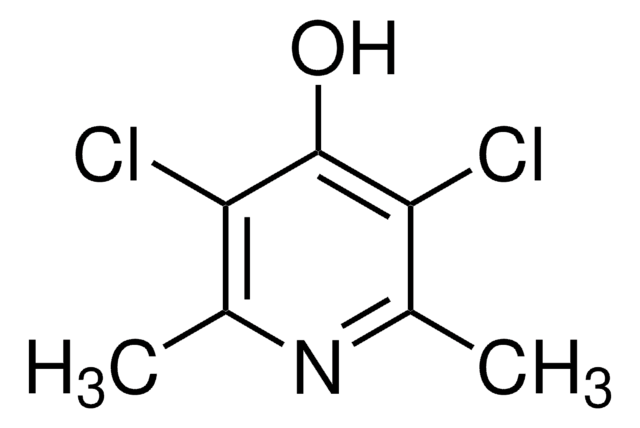F5396
Fenbendazole
≥98%
Synonyme(s) :
5-(Phénylthio)-2-benzimidazolecarbamate de méthyle
About This Item
Produits recommandés
Pureté
≥98%
Chaîne SMILES
COC(=O)Nc1nc2cc(Sc3ccccc3)ccc2[nH]1
InChI
1S/C15H13N3O2S/c1-20-15(19)18-14-16-12-8-7-11(9-13(12)17-14)21-10-5-3-2-4-6-10/h2-9H,1H3,(H2,16,17,18,19)
Clé InChI
HDDSHPAODJUKPD-UHFFFAOYSA-N
Vous recherchez des produits similaires ? Visite Guide de comparaison des produits
Description générale
Application
- Fenbendazole in Veterinary Medicine: Investigated for efficacy against coccidicidal fungi in avian species, demonstrating broad-spectrum antiparasitic potential. Additionally, its environmental impact and pharmacokinetics reveal insights for sustainable agricultural practices and disease vector control. (Lozano et al., 2024), (Hachgenei et al., 2024), (Durden et al., 2023).
- Food safety and allergen detection: Fenbendazole′s implications in food safety are explored through quantitative PCR methods for detecting allergenic species in foods, underscoring the importance of accurate detection techniques in food industry compliance and safety standards (Costa et al., 2023).
- Analysis of antibiotic and anthelmintic residues: The occurrence and exposure evaluation of Fenbendazole residues in cow milk in China is studied, emphasizing the need for rigorous monitoring of food products to ensure public health safety (Chang et al., 2023).
Mention d'avertissement
Warning
Mentions de danger
Conseils de prudence
Classification des risques
Aquatic Acute 1 - Aquatic Chronic 1 - Repr. 2 - STOT RE 2
Organes cibles
Liver,lymph node,Stomach,Nervous system
Code de la classe de stockage
11 - Combustible Solids
Classe de danger pour l'eau (WGK)
WGK 3
Équipement de protection individuelle
Eyeshields, Gloves, type N95 (US)
Certificats d'analyse (COA)
Recherchez un Certificats d'analyse (COA) en saisissant le numéro de lot du produit. Les numéros de lot figurent sur l'étiquette du produit après les mots "Lot" ou "Batch".
Déjà en possession de ce produit ?
Retrouvez la documentation relative aux produits que vous avez récemment achetés dans la Bibliothèque de documents.
Les clients ont également consulté
Notre équipe de scientifiques dispose d'une expérience dans tous les secteurs de la recherche, notamment en sciences de la vie, science des matériaux, synthèse chimique, chromatographie, analyse et dans de nombreux autres domaines..
Contacter notre Service technique